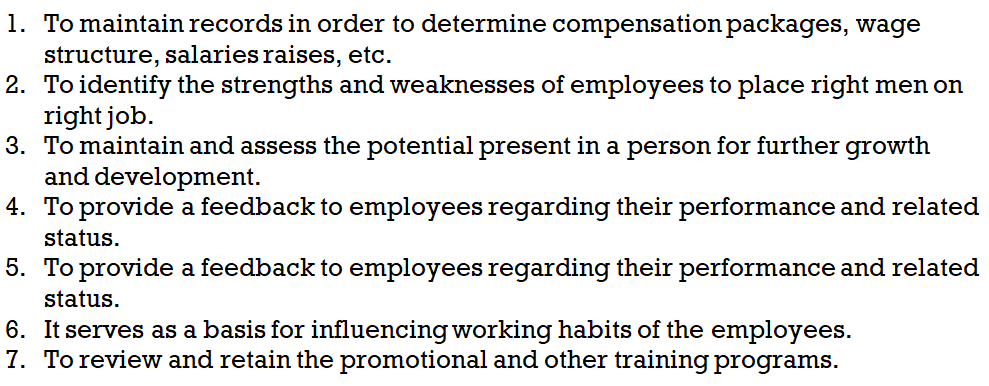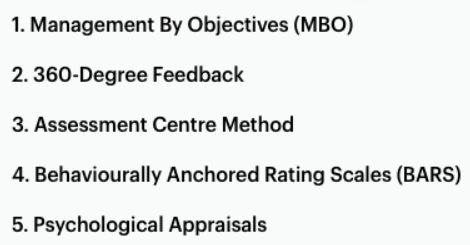Unit - 4
Performance Appraised
Performance Appraisal is the systematic evaluation of the performance of employees and to understand the abilities of a person for further growth and development.
Objectives of Performance Appraisal

Performance Appraisal Methods
Traditional:

Modern Method:

Transfer implies movement of an employee from one job to another without any increase in pay, status or responsibilities.
OBJECTIVE:

TYPES:
Replacement Transfers:
When an employee with a long service period is transferred in some other department to replace a person with a shorter service.
Production Transfers:
When an employee is transferred from one department to another department. Such a transfer is known as production transfer.
Versatility Transfers:
It is made to prepare the employees for production and replacement transfer. An employee is trained on different jobs so that he or she can adjust on a different job.
Remedial Transfers:
When an employee does not feel comfortable on his job, he may be transferred to some other job.
Shift Transfers:
This is related to manufacturing concerns. There are normally three shifts and are rotating.
It is the rising movement of an employee from current job to another, i.e. higher pay scale, more responsibility and at higher organizational level. There may be DRY PROMOTION, in which an employee is promoted at higher level job without increase in pay. Promotion is a motivational tool for the employees.
BASES OF PROMOTION:
• Merit based promotion: when the promotion takes place on the basis of an employee’s performance in the current job. It is done on the basis of his skills, knowledge and ability.
• Seniority based promotion: Here the employee who has given the long service in the organization gets promoted. There is no scope for favoritism.
POLICY STATEMENT

Resignation:
- It is defined as termination of service of an employee by serving a notice period.
- It may be voluntary or involuntary.
Layoff:
- It is denial of employment to the employees for reasons beyond the control of employer.
- The reasons can be seasonal fluctuations in demand, breakdown of machinery, shortage of power, raw materials, etc. are the examples of reasons leading to layoff.
Retrenchment:
- It is permanent termination of an employee’s services for economic reasons.
- It occurs on account of surplus staff, poor demand for products, general economic slowdown, etc.
Dismissal or Discharge:
- It is termination of the service of an employee, not necessarily as a punishment step.
- A discharge does not arise from a single irrational act.
- Dismissal or discharge is a drastic step and should be taken after careful thought.
Suspension:
- It prohibits an employee from attending work and performs normal duties assigned to him.
- It is a serious punishment and is generally awarded only after a proper enquiry has been conducted.
References:
1. Personal management by C.B.Memoria& G.V. Gankar- Himalaya
2. Personal management & industrial relation by P.C.Tripathi-S.chand
3. Industrial relation, Trade Union &Labour Relation by G.P.Sinha& PRN Sinha, Pearson.